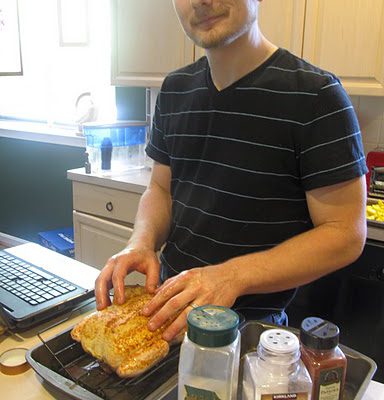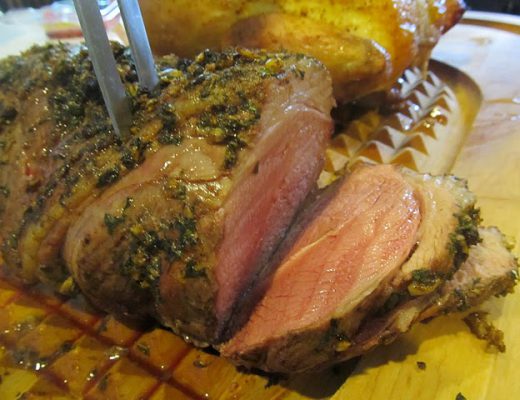We make it clear that we are in no position to expertly and thoroughly explain the science behind the Paleo Diet. So many people, though, ask us about it. In response, we went out and found a scientist for you. Meet The Paleo Mom, a scientist-turned-at-home-mom. She has written a series of posts for us on the “why” of this way of eating. We hope this will be informative and fun for you. Check out her website, an adorable place full of interesting posts and cute drawings.
Part 2 of 4 in this guest series: How Do Grains, Legumes and Dairy Cause a Leaky Gut? Part 1: Lectins
One of the fundamental principles of paleolithic nutrition is to protect the lining of the gut by eliminating foods that damage it. By prioritizing gut health, we are able to treat and prevent the many health issues associated with having a “leaky gut”. But how exactly do grains, legumes and dairy wreak so much havoc on the digestive tract? There are several ways in which these foods create holes in the gut lining. The best understood is the damage caused by lectins.
Grains and legumes contain lectins. Lectins are a class of proteins found in many types of seeds (like wheat, oats, barley, rice, peanuts, soy, etc.) that are part of the plant’s natural defense mechanism. A digested seed is not one that can grow a new plant. To defend itself, the seed from these plants either deter predators (like us) from eating them by making us sick or resist digestion completely or both. The grains and legumes that have become a part of the human diet since the Agricultural Revolution 10,000 years ago aren’t toxic enough to make most of us severely ill immediately after eating them (otherwise humans never would have domesticated them!). Instead, their effects are more subtle and can take years to manifest as a life-threatening disease. You may be wondering why other seeds (like the ones in berries or kiwi or bananas) are okay to eat. These come from plants with a friendlier defense strategy: we get to eat the delicious fruit encasing the seeds and then the seeds, which pass through our digestive tracts intact, get to be planted in rich manure. How do you know the difference between a harmless seed and one that contains damaging lectins? Here’s the rule: if you can eat it raw, then it’s okay to eat. If you have to cook it, it has damaging lectins.
Lectins are not broken down in the normal digestive process, both because the structure of these proteins are not compatible with our bodies’ digestive enzymes but also because the foods that contain these lectins also contain protease inhibitors (compounds that stop the enzymes from breaking down proteins; more on these in Part 2). Lectins, which remain largely intact throughout the digestive tract, can damage the gut lining in several ways. First, lectins trick the enterocytes (the cells that line the gut) into thinking they are simple sugars. The enterocytes “willingly” transport the lectins from the “inside-the-gut” side of the cell to the “outside-the-gut” side of the cell. While in transit, the lectins may cause changes inside the enterocyte that either kill the cell or render it ineffective at its job, which leads to more pathogens leaking out of the gut. Once outside the gut, these lectins activate the resident immune cells of the gut which respond by producing inflammatory cytokines (the chemical messengers that circulate in the blood and tell white blood cells to attack) and antibodies against these foreign proteins. Because at least part of this response is not specific to the lectin itself, the enterocytes (being the closest innocent bystanders) can be targeted and killed by the body’s immune cells, leading to the microscopic holes that create a leaky gut.
Gluten is both the best known example of a lectin, and also the most damaging. In many individuals (like those with diagnosed gluten sensitivity and celiac disease), gluten can weaken the connections between enterocytes, essentially creating a space in between the cells through which gut contents can leak through, adding yet another way that this particular lectin can cause a leaky gut. Once gluten has passed through the gut lining, it stimulates the resident immune cells of the gut to start producing antibodies. Gluten is especially insidious because parts of this protein closely resemble many proteins in the human body, so there’s a high likelihood that some of the antibodies produced to target it will also target human cells. One extremely commonly formed antibody is one against our enzyme transglutaminase. Transglutaminase is an essential enzyme in every cell of the body, which makes important modifications to proteins as they are produced inside the cell. It also stimulates wound healing, but if antibodies have formed against it, then when it is secreted by damaged cells in inflamed areas of the small intestine (or any other damaged tissue in the body), rather than helping to heal the surrounding tissue, it instead turns it into a target of the immune system. This is yet another way in which gluten can cause a leaky gut. Importantly, when antibodies against transglutaminase form, every cell and organ in the body becomes a potential target. Because an exaggerated sensitivity to gluten is the cause of Celiac Disease, which affects at least 1 in 133 people, its effects on the gut have been the most studied. Scientists still don’t know which of the many ways that gluten can harm the body apply to all lectins and which are specific to gluten.
Gluten sensitivity has already been linked to dozens of autoimmune diseases. Even in individuals who do not have celiac disease or gluten sensitivity, it can take up to six months for the gut to fully heal after a single gluten exposure. While other lectins may not be quite as damaging as gluten, scientists continue to discover new ways in which foods that contain lectins can contribute to a leaky gut, inflammation and autoimmune diseases.
About The Paleo Mom: Sarah Ballantyne is a scientist turned stay-at-home mom and a recent convert to paleolithic nutrition who is working hard to address her own health issues and to improve her family’s nutrition and health. She blogs about her own experimentation with different implementations of the paleo diet, about her efforts to transition her family to paleolithic nutrition, and shares her successful recipes. Sarah’s passion is to share her biology, physiology and nutrition knowledge through informative posts that distill the science behind the paleo diet into approachable explanations. Visit her site at www.thepaleomom.com or on Facebook or Twitter.






